Story highlights
- Scottish nurse Pauline Cafferkey's condition has deteriorated, London's Royal Free Hospital says
- Health officials say she has an "unusual late complication" from an earlier Ebola infection
- She was initially treated for Ebola in December and was discharged the following month
(CNN)About nine months ago, Pauline Cafferkey was discharged from a London hospital -- seemingly signaling her victory in beating Ebola.
Now, not only is Cafferkey back in the hospital with a rare relapse of the deadly virus, but she's gotten worse.
London's Royal Free Hospital announced Wednesday afternoon that "Cafferkey's condition has deteriorated and she is now critically ill."
The hospital didn't elaborate on the news about the Scottish nurse, who last year became the first person diagnosed with Ebola in the United Kingdom. But it's not a good sign, coming five days after the same medical facility confirmed Cafferkey had been transferred there from Queen Elizabeth University Hospital in Glasgow "due to an unusual late complication of her previous infection by the Ebola virus."
That day, the Royal Free Hospital indicated that Cafferkey was in "serious condition" and being treated in a "high-level isolation unit."
"Sad to hear of deterioration in Pauline Cafferkey's condition," UK Health Secretary Jeremy Hunt tweeted. "Thoughts & prayers with her & wonderful team looking after her @RoyalFreeNHS."
Since her January discharge, Cafferkey has been out and about, including receiving a Pride of Britain award late last month and paying a visit to 10 Downing Street, where pictures showed her with the prime minister's wife, Samantha Cameron.
Last week Dr. Emilia Crighton, director of public health for the National Health Service group NHS Greater Glasgow and Clyde, insisted that the risk of the 39-year-old Cafferkey inadvertently passing on Ebola to anyone else was "very low."
"In line with normal procedures in cases such as this, we have identified a small number of close contacts of Pauline's that we will be following up as a precaution," Crighton said.
Went to Sierra Leone during Ebola outbreak
Like many other volunteers, Cafferkey had gone to West Africa knowing the dangers there. The Ebola virus had spread like wildfire, ultimately killing more than 11,000 people and infecting some 28,000,according to the World Health Organization.
Yet that harsh reality didn't stop the public health nurse in Scotland's South Lanarkshire area from being part of a 30-person team deployed by the UK government to work in Sierra Leone with Save the Children.
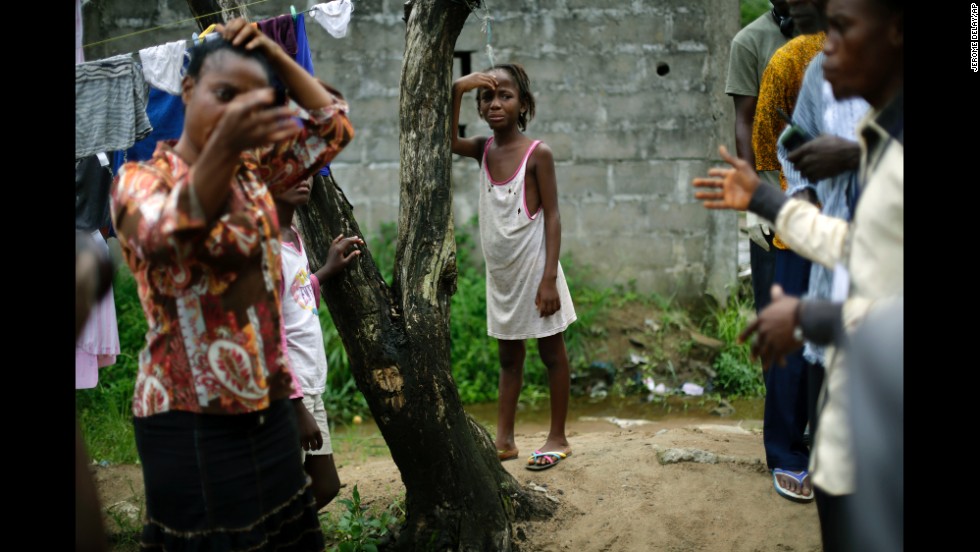
45 photos: The Ebola epidemic
A girl cries as community activists approach her outside her Monrovia home on October 2, 2014, a day after her mother was taken to an Ebola ward.
Hide Caption
23 of 45
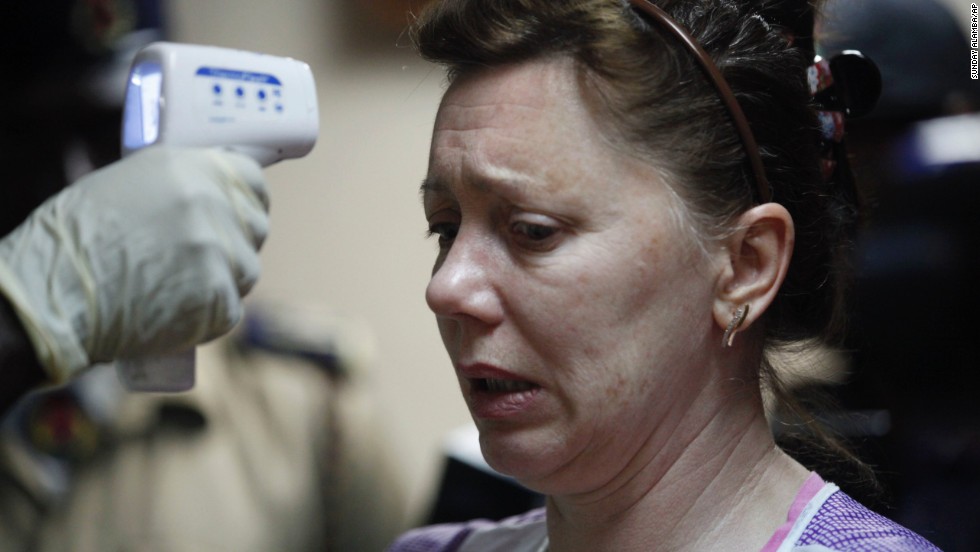
45 photos: The Ebola epidemic
A health official uses a thermometer September 29, 2014, to screen a Ukrainian crew member on the deck of a cargo ship at the Apapa port in Lagos, Nigeria.
Hide Caption
24 of 45
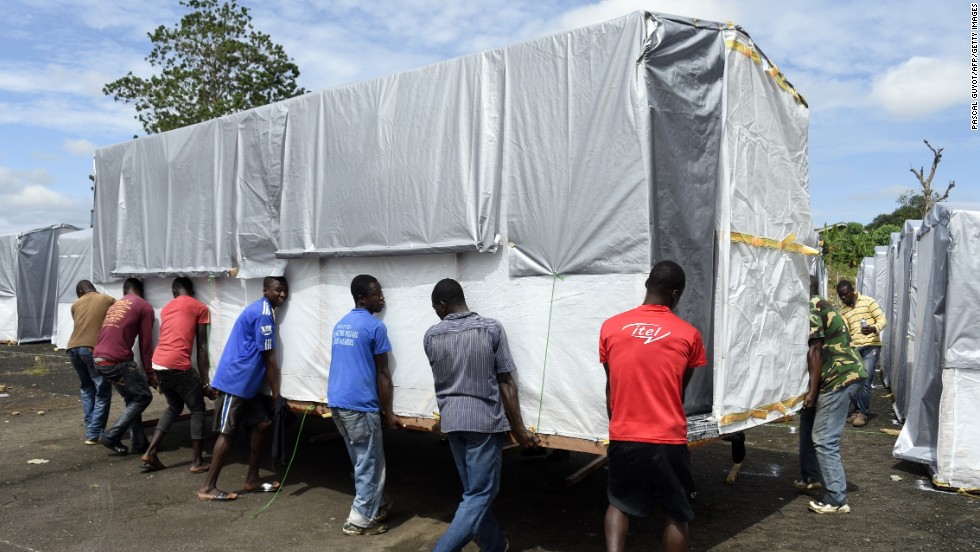
45 photos: The Ebola epidemic
Workers move a building into place as part of a new Ebola treatment center in Monrovia on September 28, 2014.
Hide Caption
25 of 45
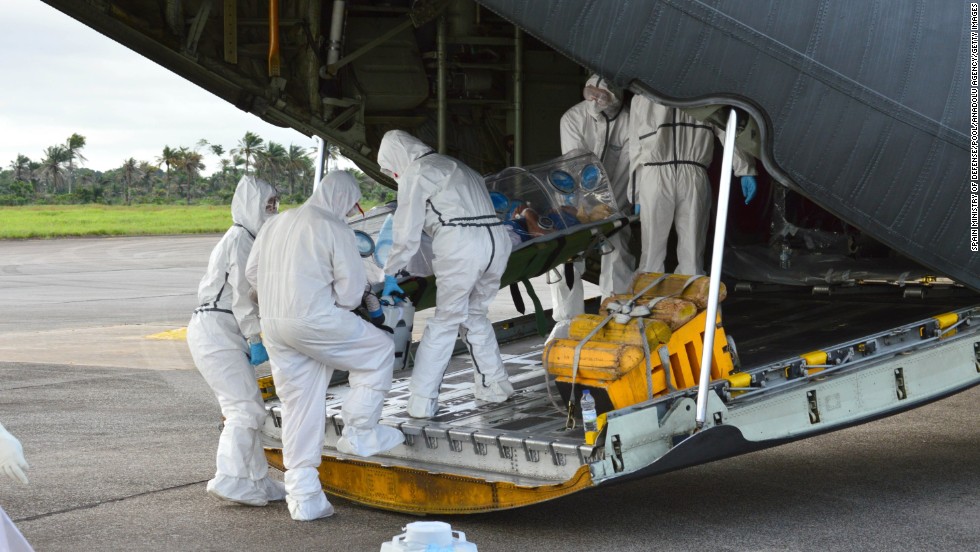
45 photos: The Ebola epidemic
Medics load an Ebola patient onto a plane at Sierra Leone's Freetown-Lungi International Airport on September 22, 2014.
Hide Caption
26 of 45
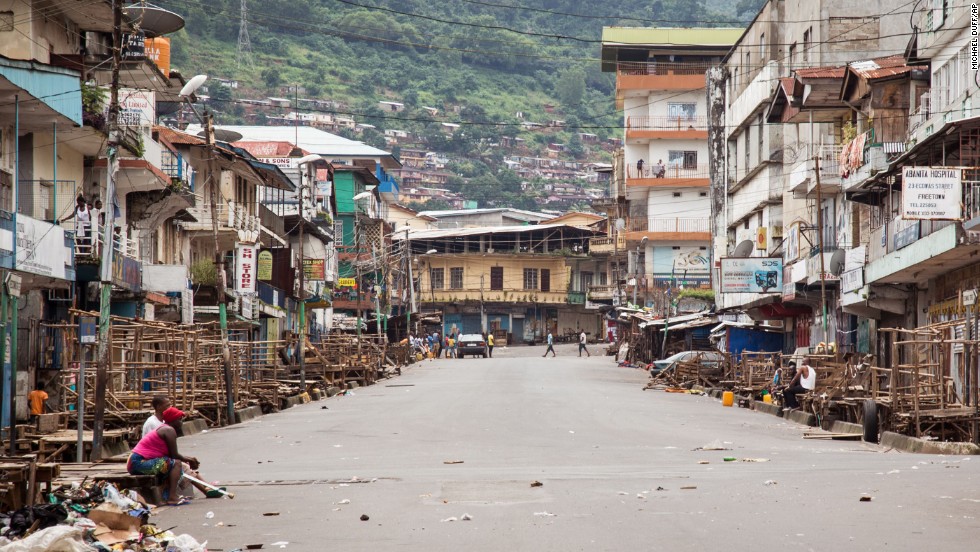
45 photos: The Ebola epidemic
A few people are seen in Freetown during a three-day nationwide lockdown on September 21, 2014. In an attempt to curb the spread of the Ebola virus, people in Sierra Leone were told to stay in their homes.
Hide Caption
27 of 45
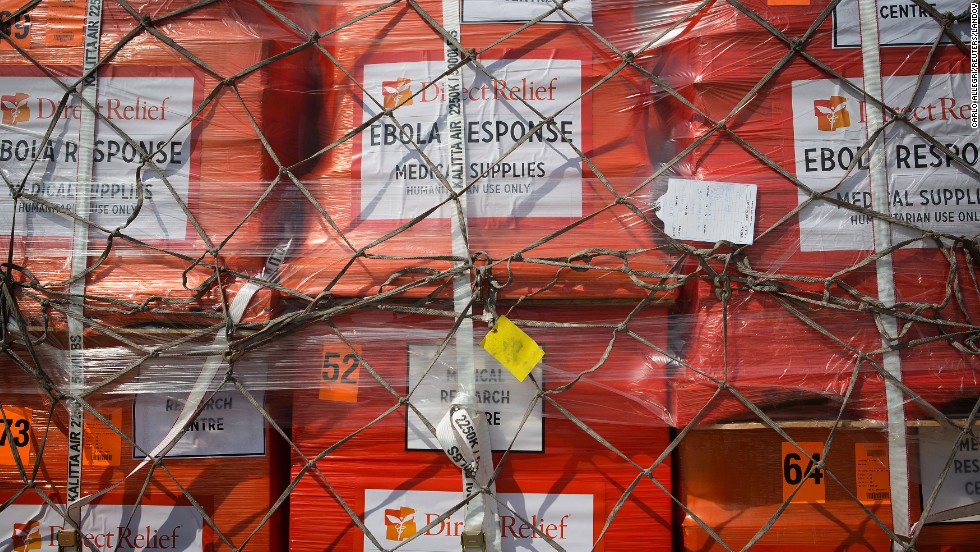
45 photos: The Ebola epidemic
Supplies wait to be loaded onto an aircraft at New York's John F. Kennedy International Airport on September 20, 2014. It was the largest single shipment of aid to the Ebola zone to date, and it was coordinated by the Clinton Global Initiative and other U.S. aid organizations.
Hide Caption
28 of 45
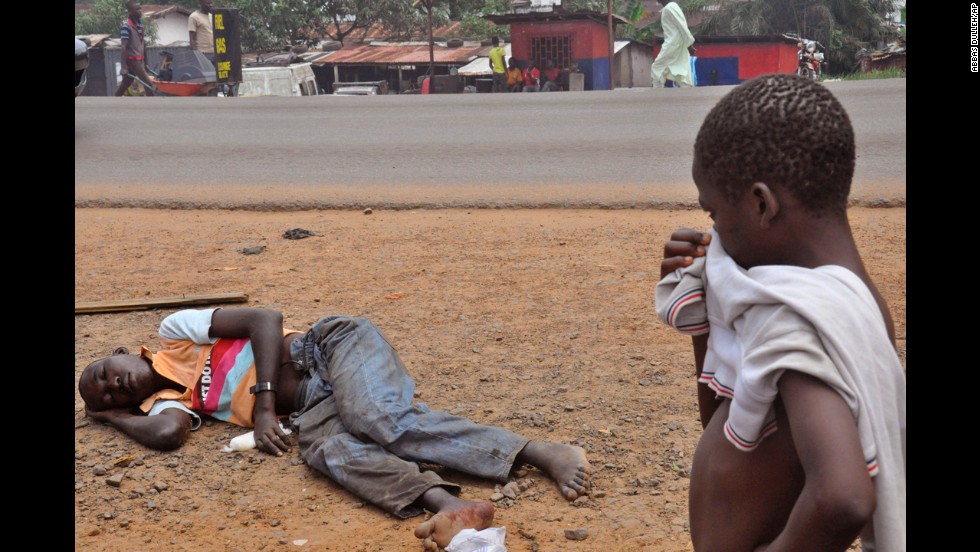
45 photos: The Ebola epidemic
A child stops on a Monrovia street September 12, 2014, to look at a man who is suspected of suffering from Ebola.
Hide Caption
29 of 45
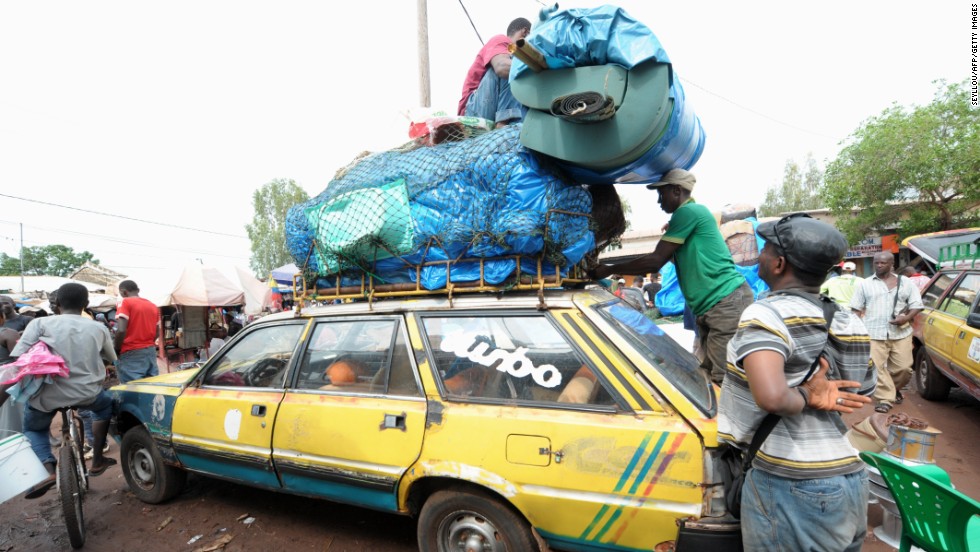
45 photos: The Ebola epidemic
After an Ebola case was confirmed in Senegal, people load cars with household items as they prepare to cross into Guinea from the border town of Diaobe, Senegal, on September 3, 2014.
Hide Caption
30 of 45
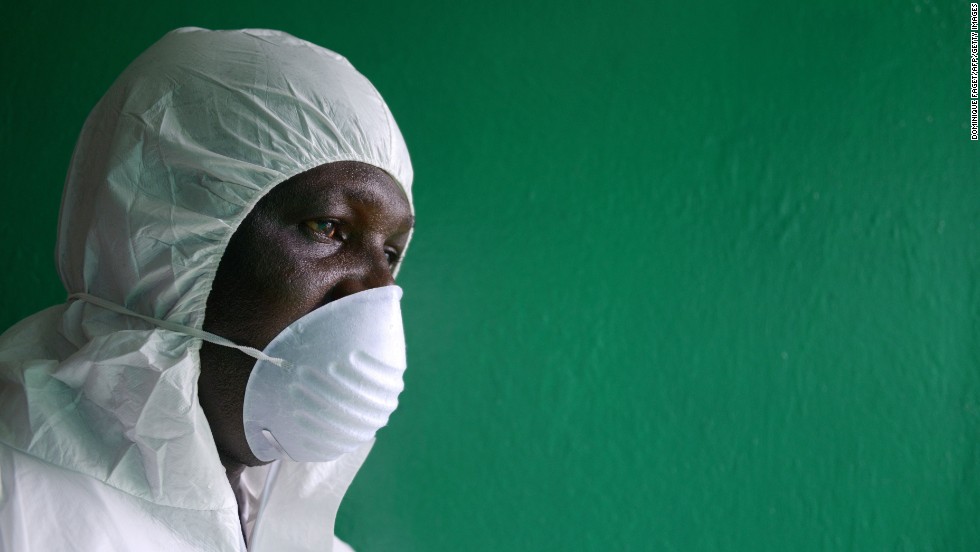
45 photos: The Ebola epidemic
A health worker wearing a protective suit conducts an Ebola prevention drill at the port in Monrovia on August 29, 2014.
Hide Caption
31 of 45
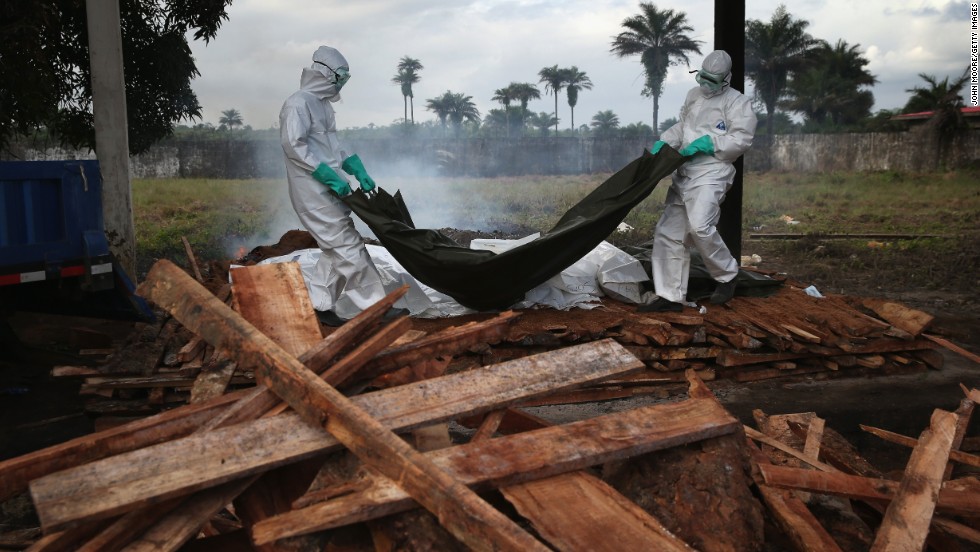
45 photos: The Ebola epidemic
A burial team from the Liberian Ministry of Health unloads bodies of Ebola victims onto a funeral pyre at a crematorium in Marshall, Liberia, on August 22, 2014.
Hide Caption
32 of 45
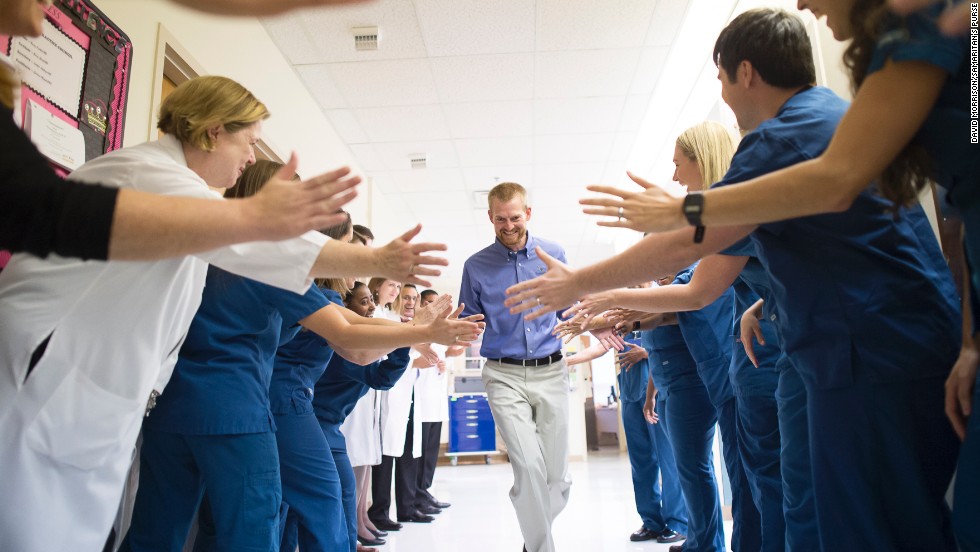
45 photos: The Ebola epidemic
Dr. Kent Brantly leaves Emory University Hospital on August 21, 2014, after being declared no longer infectious from the Ebola virus. Brantly was one of two American missionaries brought to Emory for treatment of the deadly virus.
Hide Caption
33 of 45
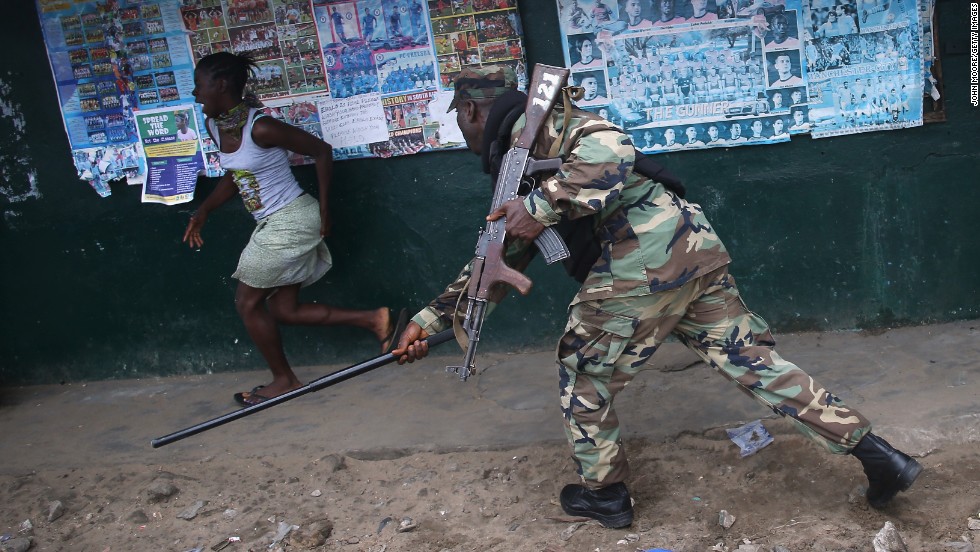
45 photos: The Ebola epidemic
An Ebola Task Force soldier beats a local resident while enforcing a quarantine on the West Point slum on August 20, 2014.
Hide Caption
34 of 45
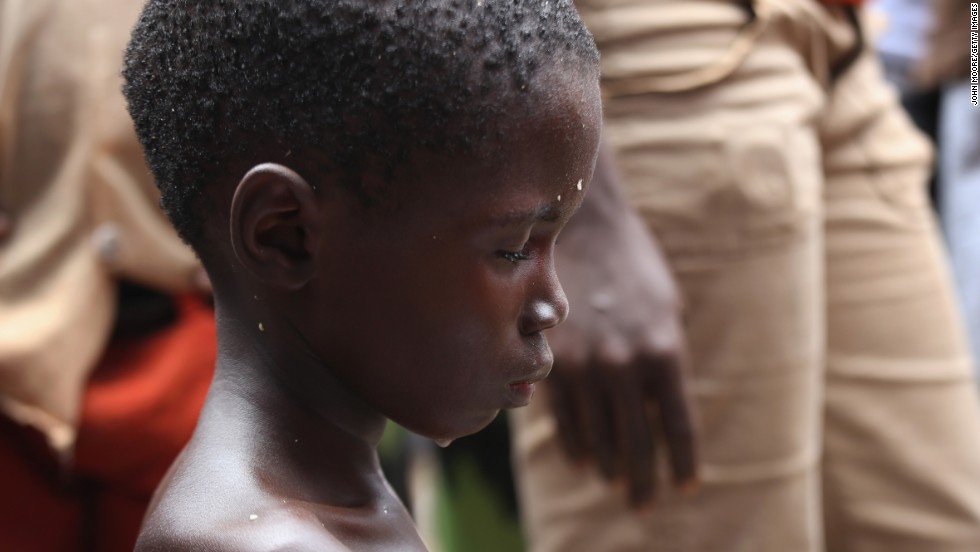
45 photos: The Ebola epidemic
Local residents gather around a very sick Saah Exco, 10, in a back alley of the West Point slum on August 19, 2014. The boy was one of the patients that was pulled out of a holding center for suspected Ebola patients after the facility was overrun and closed by a mob on August 16. A local clinic then refused to treat Saah, according to residents, because of the danger of infection. Although he was never tested for Ebola, Saah's mother and brother died in the holding center.
Hide Caption
35 of 45
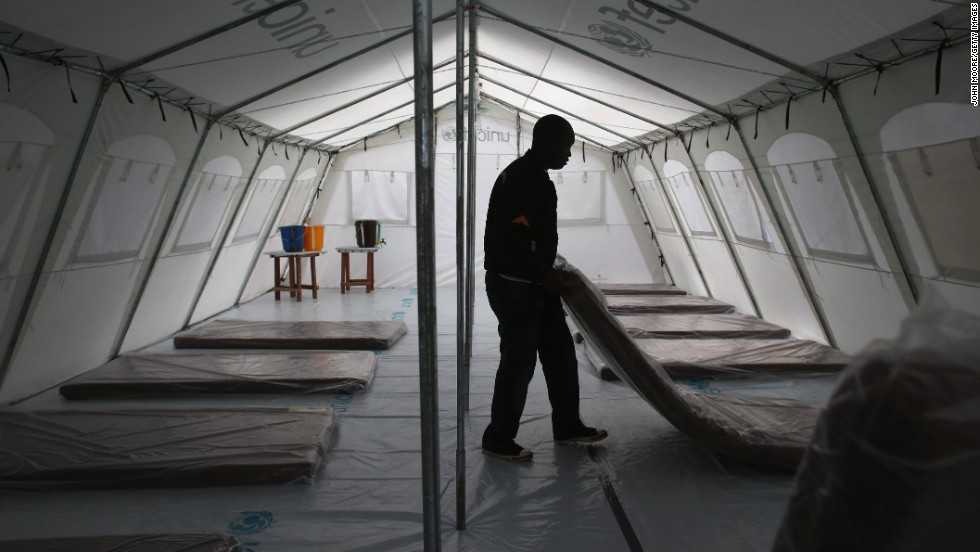
45 photos: The Ebola epidemic
Workers prepare the new Ebola treatment center on August 17, 2014.
Hide Caption
36 of 45
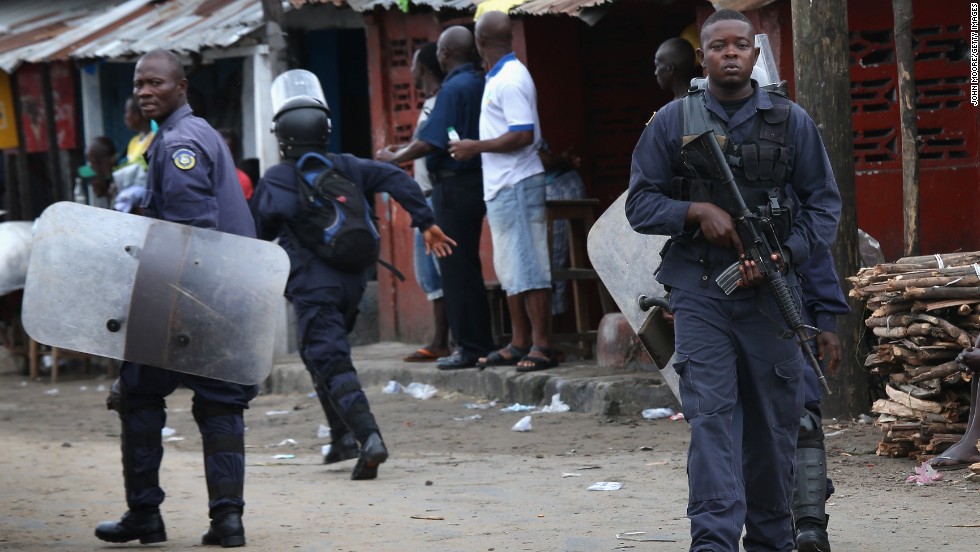
45 photos: The Ebola epidemic
Liberian police depart after firing shots in the air while trying to protect an Ebola burial team in the West Point slum of Monrovia on August 16, 2014. A crowd of several hundred local residents reportedly drove away the burial team and their police escort. The mob then forced open an Ebola isolation ward and took patients out, saying the Ebola epidemic is a hoax.
Hide Caption
37 of 45
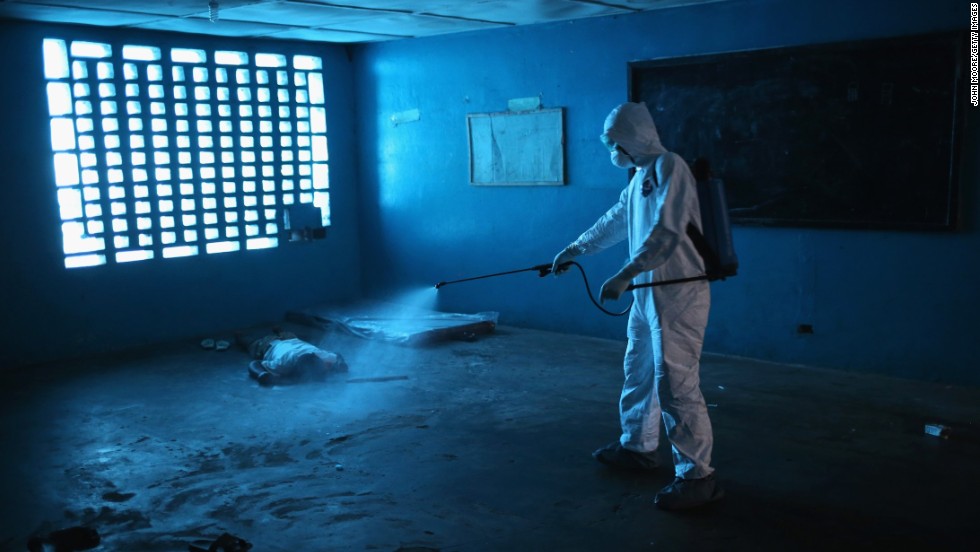
45 photos: The Ebola epidemic
A health worker disinfects a corpse after a man died in a classroom being used as an Ebola isolation ward August 15, 2014, in Monrovia.
Hide Caption
38 of 45
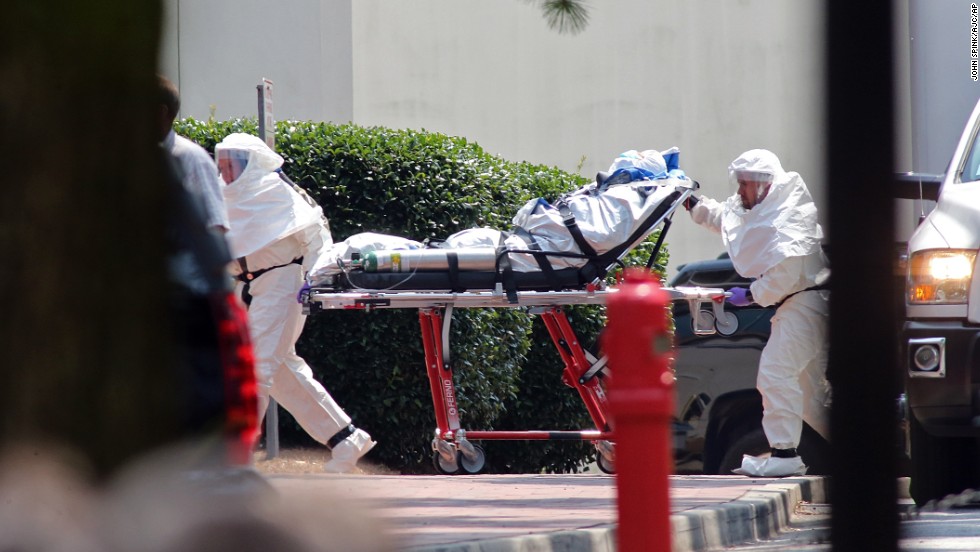
45 photos: The Ebola epidemic
Aid worker Nancy Writebol, wearing a protective suit, gets wheeled on a gurney into Emory University Hospital in Atlanta on August 5, 2014. A medical plane flew Writebol from Liberia to the United States after she and her colleague Dr. Kent Brantly were infected with the Ebola virus in the West African country.
Hide Caption
39 of 45
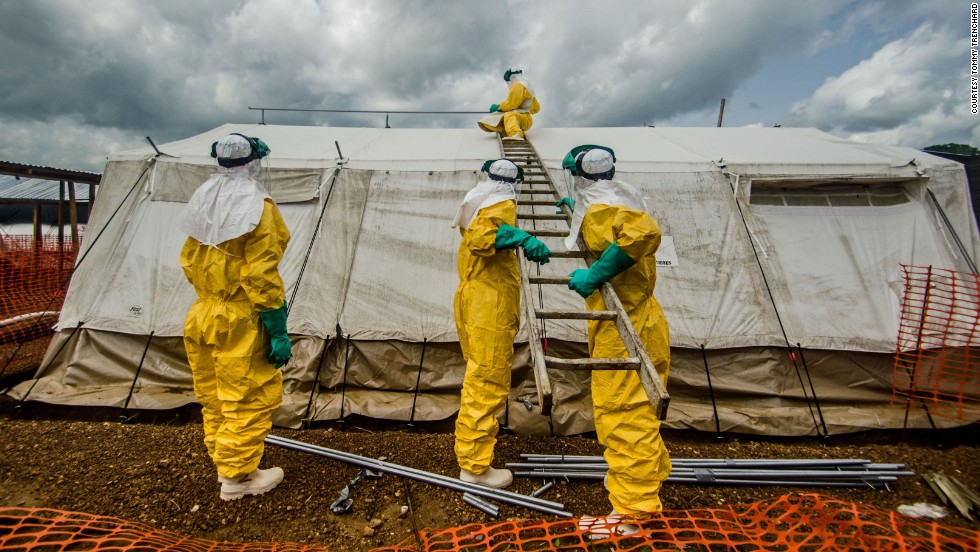
45 photos: The Ebola epidemic
Members of Doctors Without Borders adjust tents in the isolation area in Kailahun on July 20, 2014.
Hide Caption
40 of 45
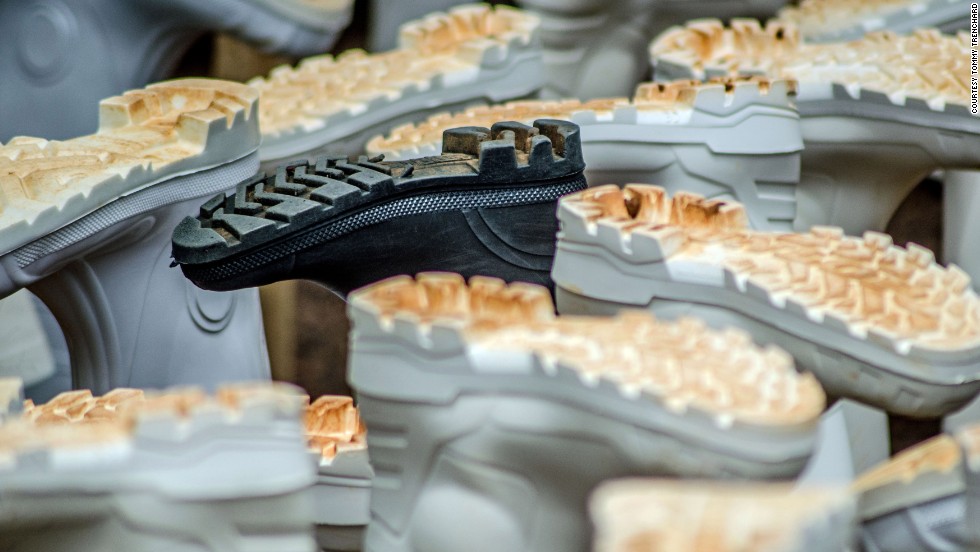
45 photos: The Ebola epidemic
Boots dry in the Ebola treatment center in Kailahun on July 20, 2014.
Hide Caption
41 of 45
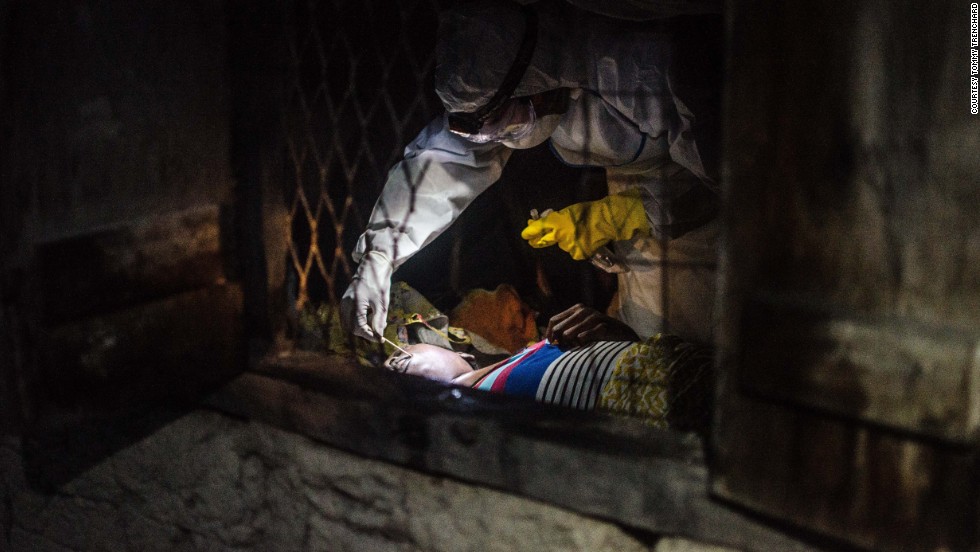
45 photos: The Ebola epidemic
Dr. Jose Rovira of the World Health Organization takes a swab from a suspected Ebola victim in Pendembu, Sierra Leone, on July 18, 2014.
Hide Caption
42 of 45
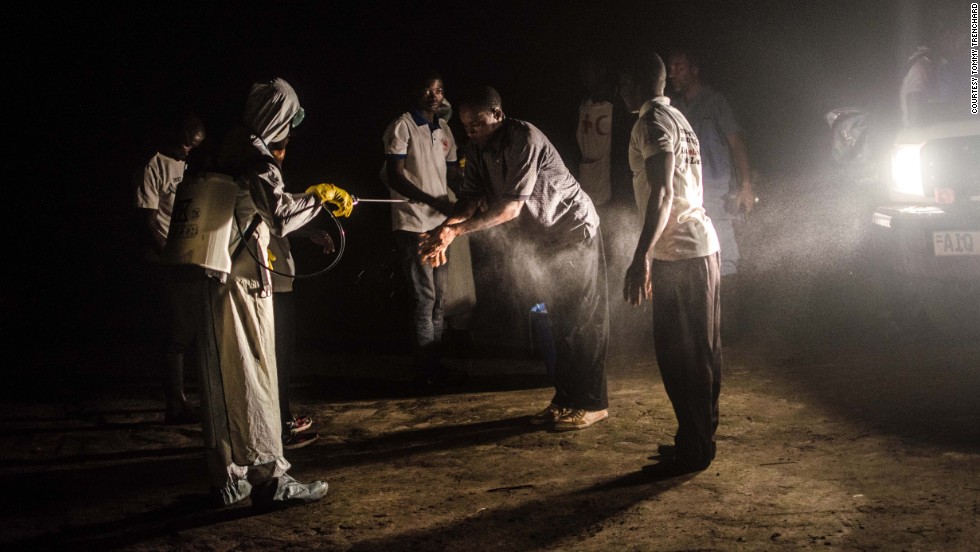
45 photos: The Ebola epidemic
Red Cross volunteers disinfect each other with chlorine after removing the body of an Ebola victim from a house in Pendembu on July 18, 2014.
Hide Caption
43 of 45
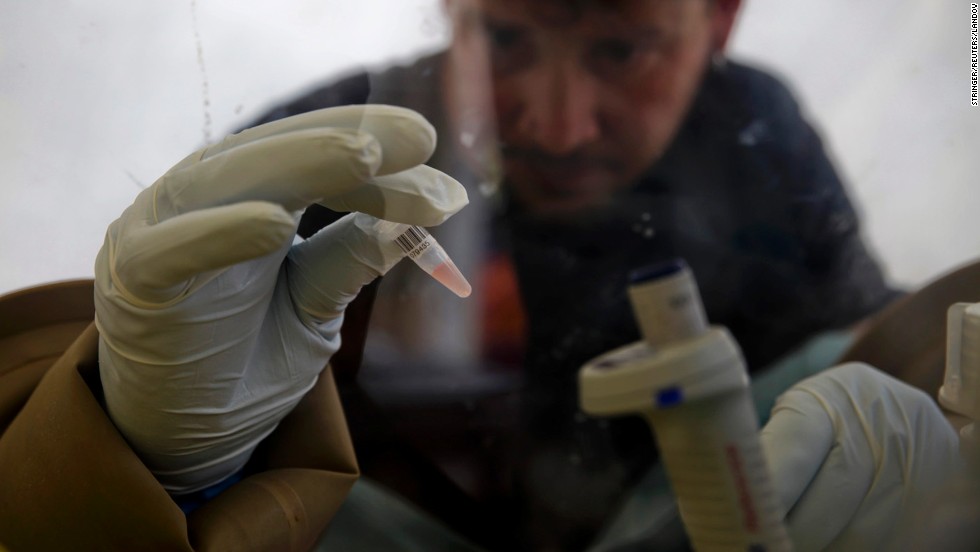
45 photos: The Ebola epidemic
A scientist separates blood cells from plasma cells to isolate any Ebola RNA and test for the virus April 3, 2014, at the European Mobile Laboratory in Gueckedou, Guinea.
Hide Caption
44 of 45
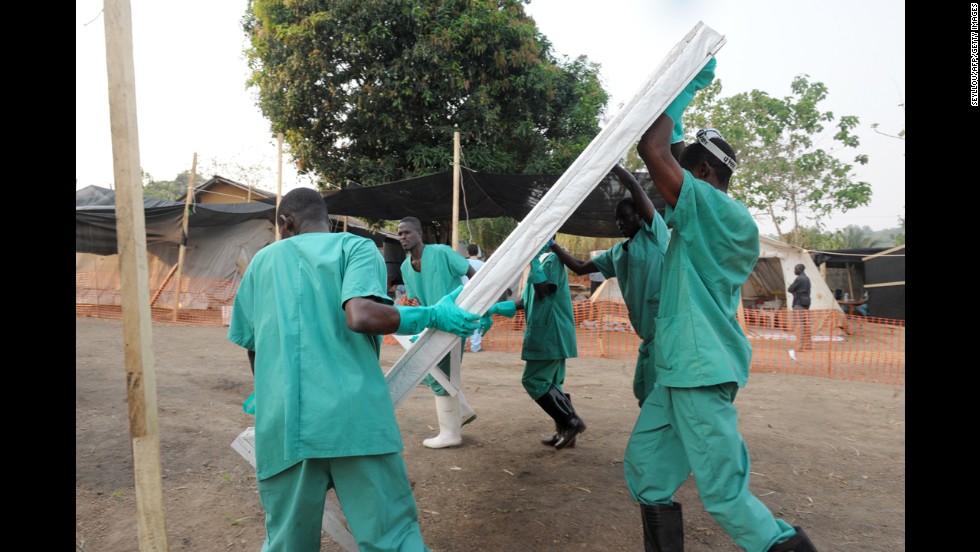
45 photos: The Ebola epidemic
Health specialists work March 31, 2014, at an isolation ward for patients at the facility in southern Guinea.
Hide Caption
45 of 45

45 photos: The Ebola epidemic
An Ebola survivor participates in a study in Monrovia, Liberia, on June 17. The country launched a five-year study to unravel the mystery of the long-term health effects that plague survivors of the viral disease. Since the epidemic started more than a year ago in a remote village in Guinea, more than 11,000 people have died, the vast majority in three West African nations, according to the latest numbers from the World Health Organization. And that number is believed to be low, since there was widespread under-reporting of cases, according to WHO.
Hide Caption
1 of 45

45 photos: The Ebola epidemic
Women in Monrovia celebrate after the World Health Organization declared Liberia Ebola-free on May 9. Other cases have recurred since, however. Two people in Liberia have died of the disease since the end of June, just weeks after the WHO declared the nation free of the disease.
Hide Caption
2 of 45

45 photos: The Ebola epidemic
A man walks past an Ebola awareness painting in Monrovia on March 22.
Hide Caption
3 of 45

45 photos: The Ebola epidemic
Soldiers from the U.S. Army's 101st Airborne Division walk across the tarmac at Campbell Army Airfield before reuniting with their families at a homecoming ceremony March 21 in Fort Campbell, Kentucky. The 162 soldiers were deployed in Liberia, where they helped fight the spread of Ebola.
Hide Caption
4 of 45

45 photos: The Ebola epidemic
Relatives weep for a loved one who it was believed died from Ebola, at a graveyard on the outskirts of Monrovia on March 11.
Hide Caption
5 of 45

45 photos: The Ebola epidemic
Doctors Without Borders staffer Alex Eilert Paulsen watches as mattresses and bed frames burn at the Ebola Treatment Unit in Paynesville, Liberia, on January 31. The organization reduced its number of beds from 250 to 30 as gains were made in battling the virus.
Hide Caption
6 of 45

45 photos: The Ebola epidemic
Pauline Cafferkey, a Scottish woman diagnosed with Ebola, is put on a plane in Glasgow, Scotland, on December 30, 2014. Cafferkey, a 39-year-old nurse who volunteered in Sierra Leone, was being transported to London for treatment.
Hide Caption
7 of 45
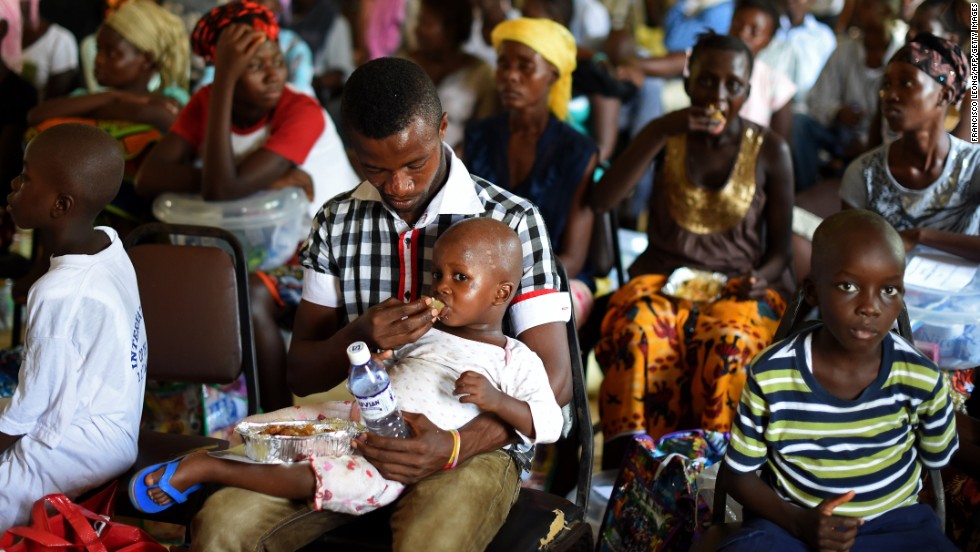
45 photos: The Ebola epidemic
A child who survived the Ebola virus is fed by another survivor at a treatment center on the outskirts of Freetown, Sierra Leone, on November 11, 2014.
Hide Caption
8 of 45
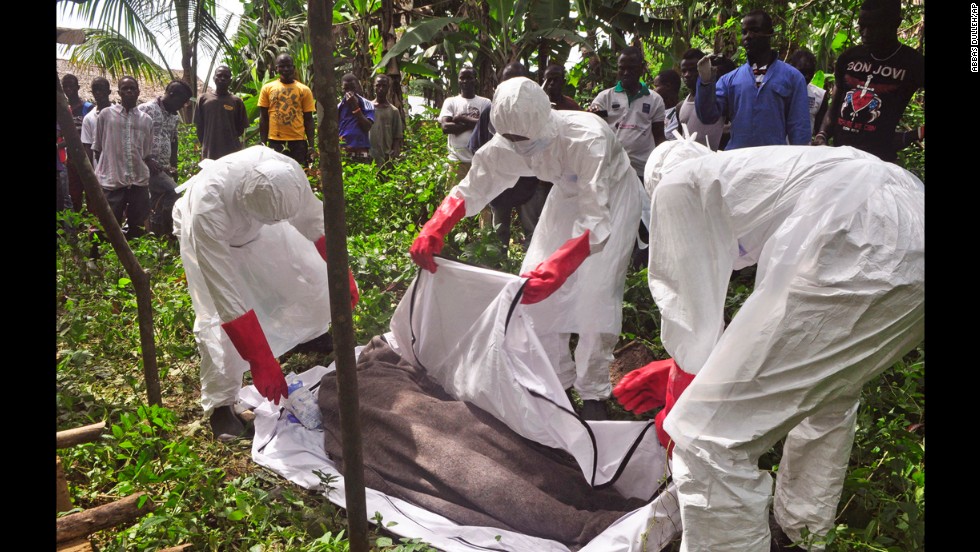
45 photos: The Ebola epidemic
Health workers in Monrovia cover the body of a man suspected of dying from the Ebola virus on October 31, 2014.
Hide Caption
9 of 45
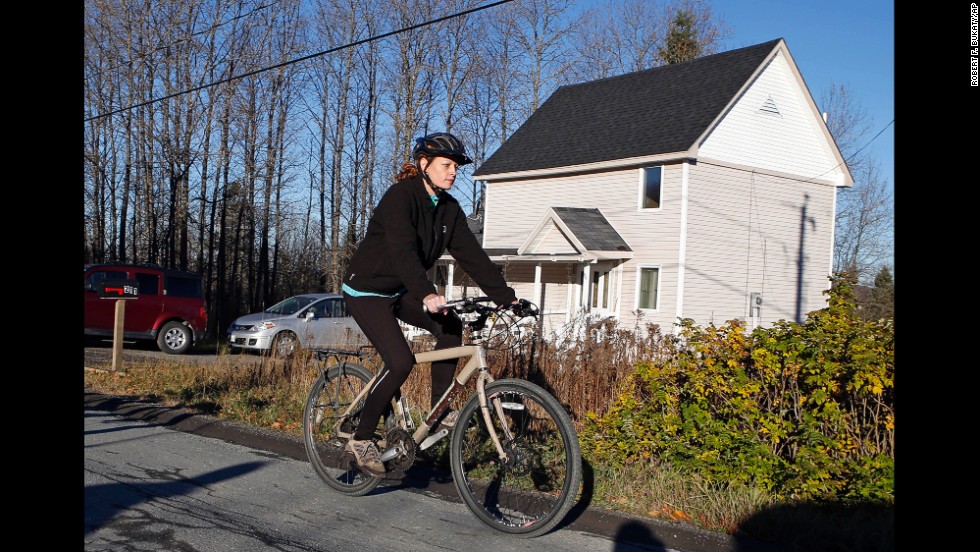
45 photos: The Ebola epidemic
Kaci Hickox leaves her home in Fort Kent, Maine, to take a bike ride with her boyfriend on October 30, 2014. Hickox, a nurse, recently returned to the United States from West Africa, where she treated Ebola victims. State authorities wanted her to avoid public places for 21 days -- the virus' incubation period. But Hickox, who twice tested negative for Ebola, said she would defy efforts to keep her quarantined at home.
Hide Caption
10 of 45
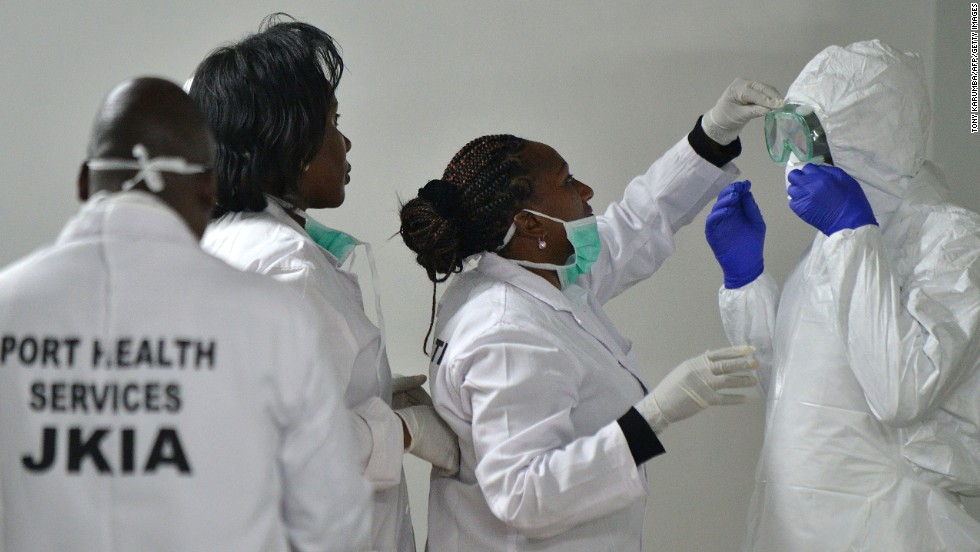
45 photos: The Ebola epidemic
Health officials in Nairobi, Kenya, prepare to screen passengers arriving at the Jomo Kenyatta International Airport on October 28, 2014.
Hide Caption
11 of 45
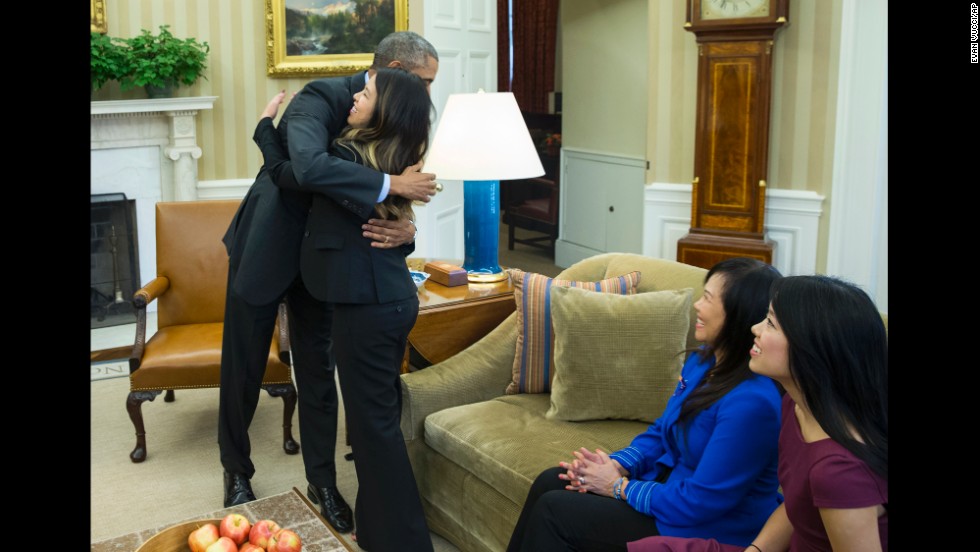
45 photos: The Ebola epidemic
U.S. President Barack Obama hugs Ebola survivor Nina Pham in the Oval Office of the White House on October 24, 2014. Pham, one of two Dallas nurses diagnosed with the virus, was declared Ebola-free after being treated at a hospital in Bethesda, Maryland. The other nurse, Amber Vinson (not pictured), was treated in Atlanta and also declared Ebola-free.
Hide Caption
12 of 45
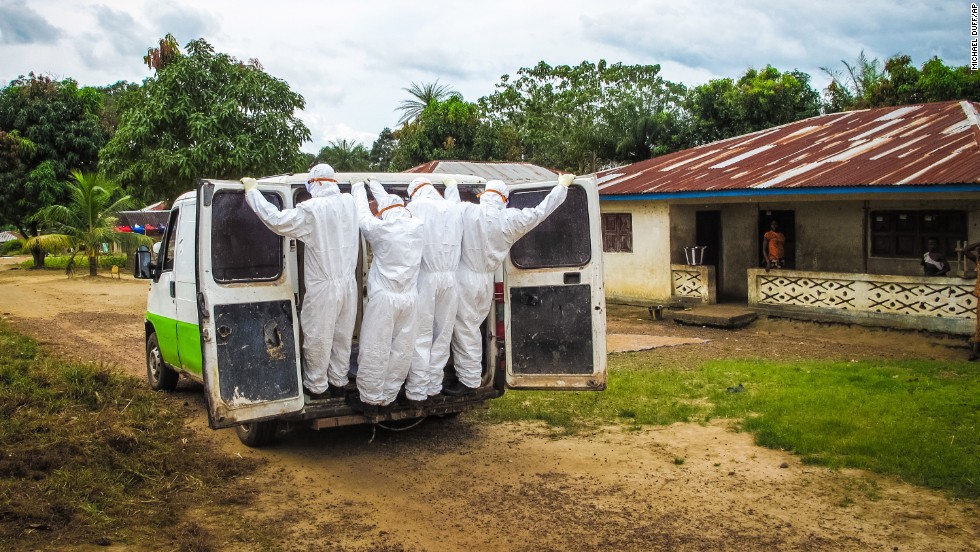
45 photos: The Ebola epidemic
Health workers in Port Loko, Sierra Leone, transport the body of a person who is suspected to have died of Ebola on October 21, 2014.
Hide Caption
13 of 45
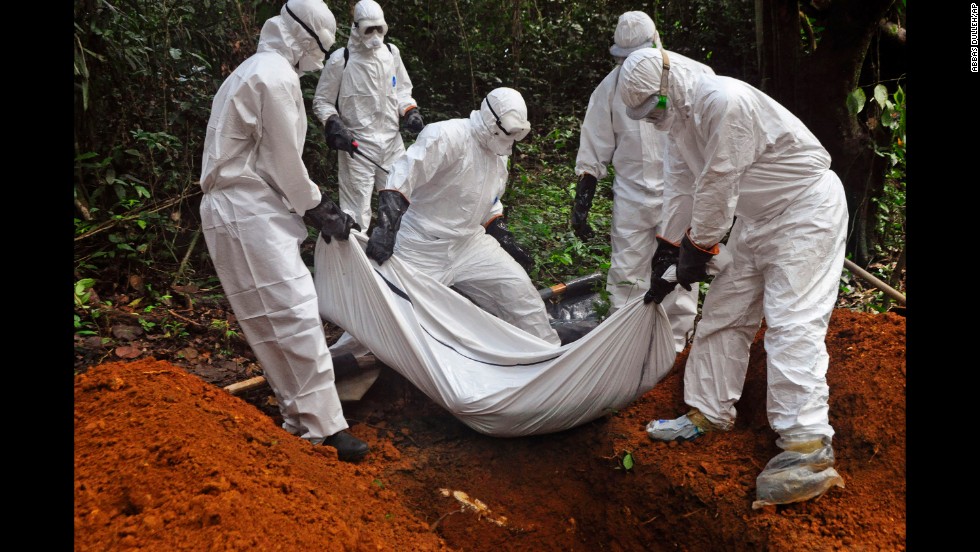
45 photos: The Ebola epidemic
Health workers bury a body on the outskirts of Monrovia on October 20, 2014.
Hide Caption
14 of 45
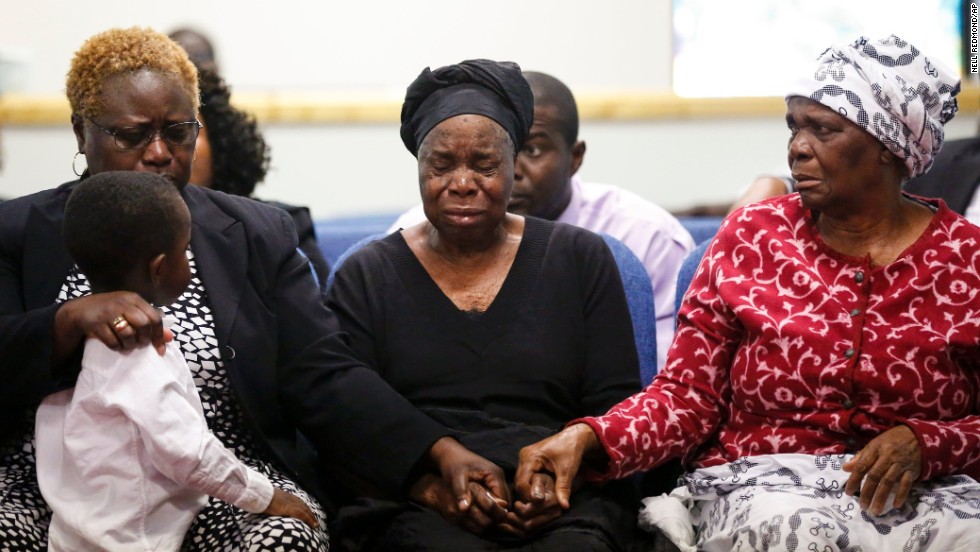
45 photos: The Ebola epidemic
Garteh Korkoryah, center, is comforted during a memorial service for her son, Thomas Eric Duncan, on October 18, 2014, in Salisbury, North Carolina. Duncan, a 42-year-old Liberian citizen, died October 8 in a Dallas hospital. He was in the country to visit his son and his son's mother, and he was the first person in the United States to be diagnosed with Ebola.
Hide Caption
15 of 45
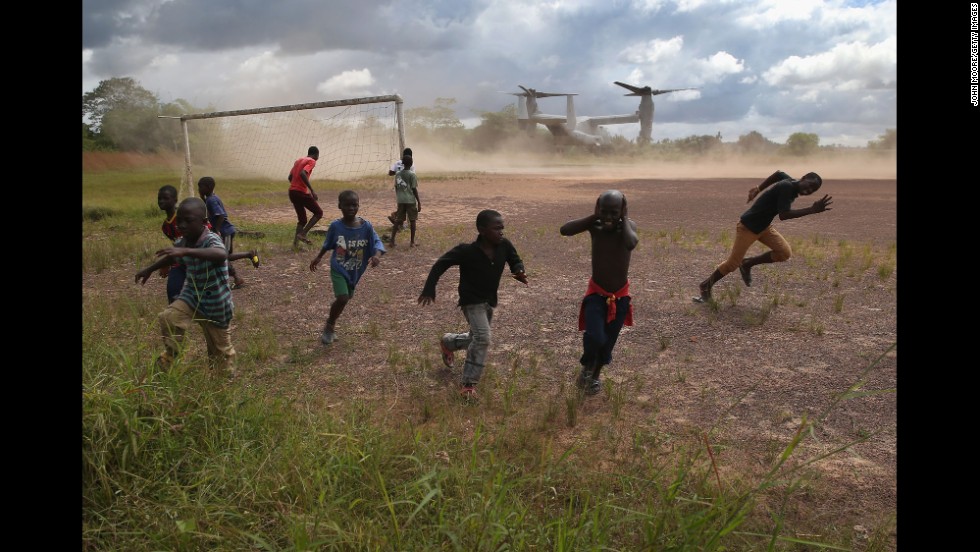
45 photos: The Ebola epidemic
Boys run from blowing dust as a U.S. military aircraft leaves the construction site of an Ebola treatment center in Tubmanburg, Liberia, on October 15, 2014.
Hide Caption
16 of 45
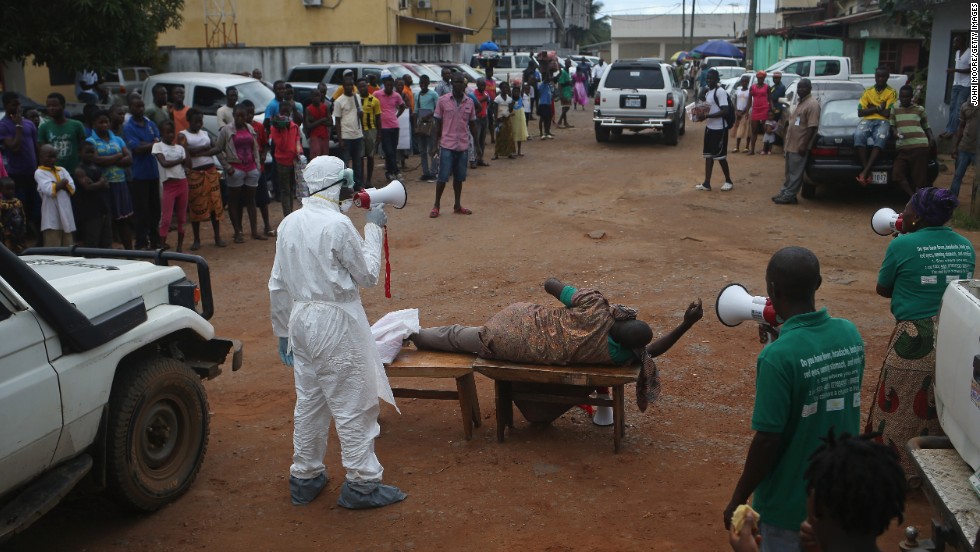
45 photos: The Ebola epidemic
Aid workers from the Liberian Medical Renaissance League stage an Ebola awareness event October 15, 2014, in Monrovia. The group performs street dramas throughout Monrovia to educate the public on Ebola symptoms and how to handle people who are infected with the virus.
Hide Caption
17 of 45

45 photos: The Ebola epidemic
Ebola survivors prepare to leave a Doctors Without Borders treatment center after recovering from the virus in Paynesville, Liberia, on October 12, 2014.
Hide Caption
18 of 45
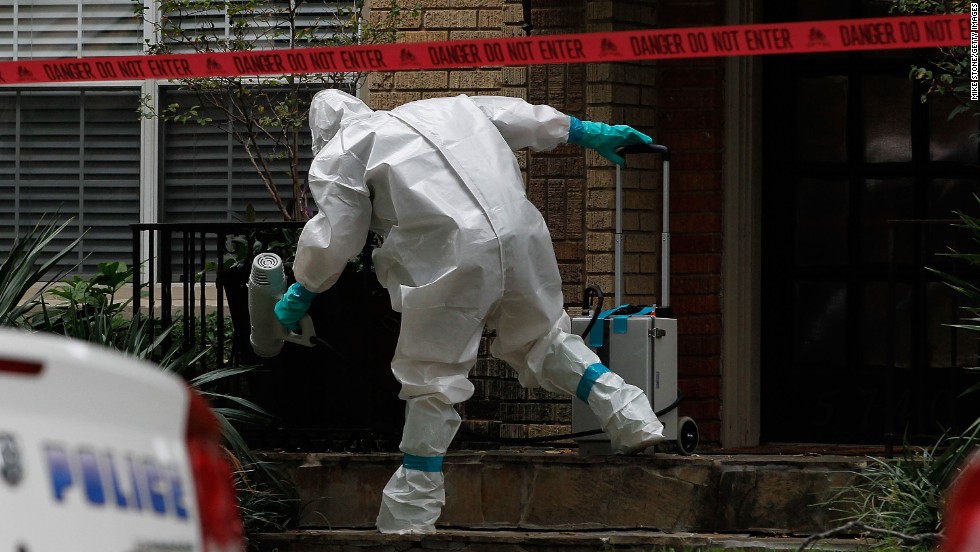
45 photos: The Ebola epidemic
A man dressed in protective clothing treats the front porch of a Dallas apartment on October 12, 2014. The apartment is home to one of the two nurses who were diagnosed with Ebola after treating Thomas Eric Duncan, a Liberian national who traveled to Dallas and later died from the virus.
Hide Caption
19 of 45
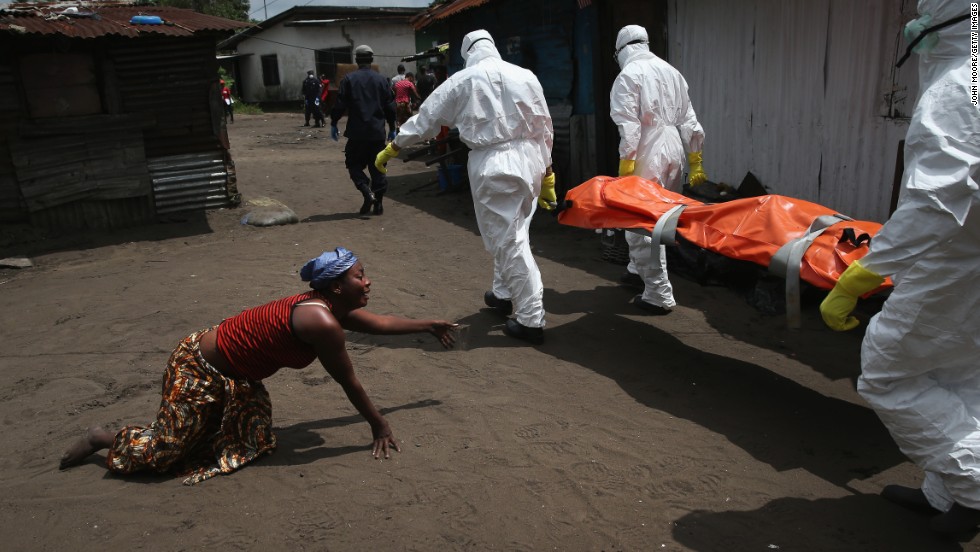
45 photos: The Ebola epidemic
A woman crawls toward the body of her sister as a burial team takes her away for cremation October 10, 2014, in Monrovia. The sister had died from Ebola earlier in the morning while trying to walk to a treatment center, according to her relatives.
Hide Caption
20 of 45
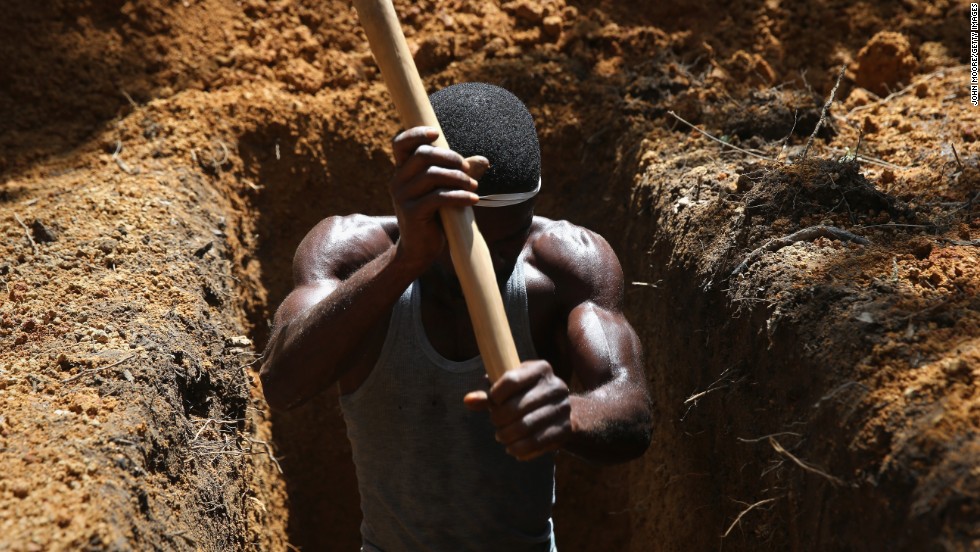
45 photos: The Ebola epidemic
A man digs a grave on October 7, 2014, outside an Ebola treatment center near Gbarnga, Liberia.
Hide Caption
21 of 45
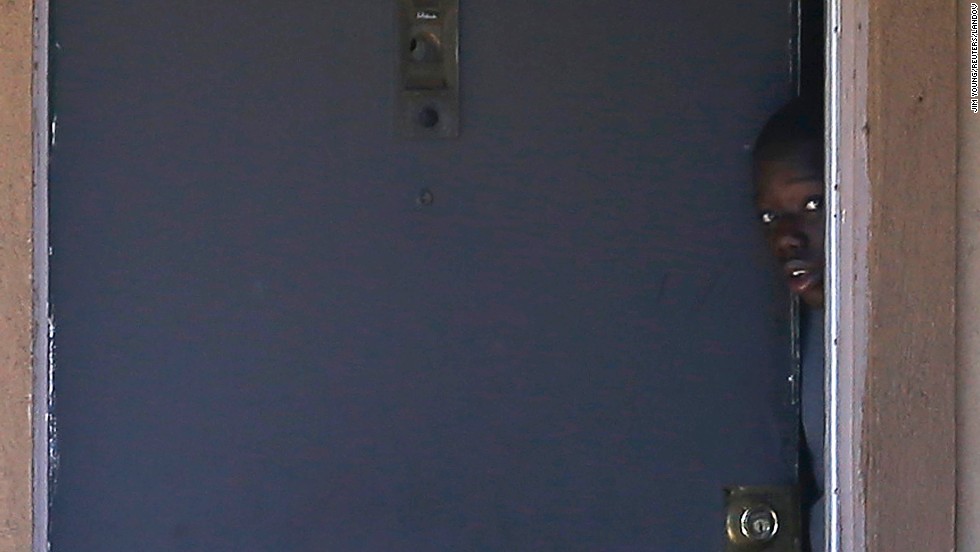
45 photos: The Ebola epidemic
A person peeks out from the Dallas apartment where Thomas Eric Duncan, the first person diagnosed with the Ebola virus in the United States, was staying on October 3, 2014.
Hide Caption
22 of 45

45 photos: The Ebola epidemic
A girl cries as community activists approach her outside her Monrovia home on October 2, 2014, a day after her mother was taken to an Ebola ward.
Hide Caption
23 of 45

45 photos: The Ebola epidemic
A health official uses a thermometer September 29, 2014, to screen a Ukrainian crew member on the deck of a cargo ship at the Apapa port in Lagos, Nigeria.
Hide Caption
24 of 45

45 photos: The Ebola epidemic
Workers move a building into place as part of a new Ebola treatment center in Monrovia on September 28, 2014.
Hide Caption
25 of 45

45 photos: The Ebola epidemic
Medics load an Ebola patient onto a plane at Sierra Leone's Freetown-Lungi International Airport on September 22, 2014.
Hide Caption
26 of 45

45 photos: The Ebola epidemic
A few people are seen in Freetown during a three-day nationwide lockdown on September 21, 2014. In an attempt to curb the spread of the Ebola virus, people in Sierra Leone were told to stay in their homes.
Hide Caption
27 of 45

45 photos: The Ebola epidemic
Supplies wait to be loaded onto an aircraft at New York's John F. Kennedy International Airport on September 20, 2014. It was the largest single shipment of aid to the Ebola zone to date, and it was coordinated by the Clinton Global Initiative and other U.S. aid organizations.
Hide Caption
28 of 45

45 photos: The Ebola epidemic
A child stops on a Monrovia street September 12, 2014, to look at a man who is suspected of suffering from Ebola.
Hide Caption
29 of 45

45 photos: The Ebola epidemic
After an Ebola case was confirmed in Senegal, people load cars with household items as they prepare to cross into Guinea from the border town of Diaobe, Senegal, on September 3, 2014.
Hide Caption
30 of 45

45 photos: The Ebola epidemic
A health worker wearing a protective suit conducts an Ebola prevention drill at the port in Monrovia on August 29, 2014.
Hide Caption
31 of 45

45 photos: The Ebola epidemic
A burial team from the Liberian Ministry of Health unloads bodies of Ebola victims onto a funeral pyre at a crematorium in Marshall, Liberia, on August 22, 2014.
Hide Caption
32 of 45

45 photos: The Ebola epidemic
Dr. Kent Brantly leaves Emory University Hospital on August 21, 2014, after being declared no longer infectious from the Ebola virus. Brantly was one of two American missionaries brought to Emory for treatment of the deadly virus.
Hide Caption
33 of 45

45 photos: The Ebola epidemic
An Ebola Task Force soldier beats a local resident while enforcing a quarantine on the West Point slum on August 20, 2014.
Hide Caption
34 of 45

45 photos: The Ebola epidemic
Local residents gather around a very sick Saah Exco, 10, in a back alley of the West Point slum on August 19, 2014. The boy was one of the patients that was pulled out of a holding center for suspected Ebola patients after the facility was overrun and closed by a mob on August 16. A local clinic then refused to treat Saah, according to residents, because of the danger of infection. Although he was never tested for Ebola, Saah's mother and brother died in the holding center.
Hide Caption
35 of 45

45 photos: The Ebola epidemic
Workers prepare the new Ebola treatment center on August 17, 2014.
Hide Caption
36 of 45

45 photos: The Ebola epidemic
Liberian police depart after firing shots in the air while trying to protect an Ebola burial team in the West Point slum of Monrovia on August 16, 2014. A crowd of several hundred local residents reportedly drove away the burial team and their police escort. The mob then forced open an Ebola isolation ward and took patients out, saying the Ebola epidemic is a hoax.
Hide Caption
37 of 45

45 photos: The Ebola epidemic
A health worker disinfects a corpse after a man died in a classroom being used as an Ebola isolation ward August 15, 2014, in Monrovia.
Hide Caption
38 of 45

45 photos: The Ebola epidemic
Aid worker Nancy Writebol, wearing a protective suit, gets wheeled on a gurney into Emory University Hospital in Atlanta on August 5, 2014. A medical plane flew Writebol from Liberia to the United States after she and her colleague Dr. Kent Brantly were infected with the Ebola virus in the West African country.
Hide Caption
39 of 45

45 photos: The Ebola epidemic
Members of Doctors Without Borders adjust tents in the isolation area in Kailahun on July 20, 2014.
Hide Caption
40 of 45

45 photos: The Ebola epidemic
Boots dry in the Ebola treatment center in Kailahun on July 20, 2014.
Hide Caption
41 of 45

45 photos: The Ebola epidemic
Dr. Jose Rovira of the World Health Organization takes a swab from a suspected Ebola victim in Pendembu, Sierra Leone, on July 18, 2014.
Hide Caption
42 of 45

45 photos: The Ebola epidemic
Red Cross volunteers disinfect each other with chlorine after removing the body of an Ebola victim from a house in Pendembu on July 18, 2014.
Hide Caption
43 of 45

45 photos: The Ebola epidemic
A scientist separates blood cells from plasma cells to isolate any Ebola RNA and test for the virus April 3, 2014, at the European Mobile Laboratory in Gueckedou, Guinea.
Hide Caption
44 of 45

45 photos: The Ebola epidemic
Health specialists work March 31, 2014, at an isolation ward for patients at the facility in southern Guinea.
Hide Caption
45 of 45

45 photos: The Ebola epidemic
An Ebola survivor participates in a study in Monrovia, Liberia, on June 17. The country launched a five-year study to unravel the mystery of the long-term health effects that plague survivors of the viral disease. Since the epidemic started more than a year ago in a remote village in Guinea, more than 11,000 people have died, the vast majority in three West African nations, according to the latest numbers from the World Health Organization. And that number is believed to be low, since there was widespread under-reporting of cases, according to WHO.
Hide Caption
1 of 45

45 photos: The Ebola epidemic
Women in Monrovia celebrate after the World Health Organization declared Liberia Ebola-free on May 9. Other cases have recurred since, however. Two people in Liberia have died of the disease since the end of June, just weeks after the WHO declared the nation free of the disease.
Hide Caption
2 of 45

45 photos: The Ebola epidemic
A man walks past an Ebola awareness painting in Monrovia on March 22.
Hide Caption
3 of 45

45 photos: The Ebola epidemic
Soldiers from the U.S. Army's 101st Airborne Division walk across the tarmac at Campbell Army Airfield before reuniting with their families at a homecoming ceremony March 21 in Fort Campbell, Kentucky. The 162 soldiers were deployed in Liberia, where they helped fight the spread of Ebola.
Hide Caption
4 of 45

45 photos: The Ebola epidemic
Relatives weep for a loved one who it was believed died from Ebola, at a graveyard on the outskirts of Monrovia on March 11.
Hide Caption
5 of 45

45 photos: The Ebola epidemic
Doctors Without Borders staffer Alex Eilert Paulsen watches as mattresses and bed frames burn at the Ebola Treatment Unit in Paynesville, Liberia, on January 31. The organization reduced its number of beds from 250 to 30 as gains were made in battling the virus.
Hide Caption
6 of 45

45 photos: The Ebola epidemic
Pauline Cafferkey, a Scottish woman diagnosed with Ebola, is put on a plane in Glasgow, Scotland, on December 30, 2014. Cafferkey, a 39-year-old nurse who volunteered in Sierra Leone, was being transported to London for treatment.
Hide Caption
7 of 45

45 photos: The Ebola epidemic
A child who survived the Ebola virus is fed by another survivor at a treatment center on the outskirts of Freetown, Sierra Leone, on November 11, 2014.
Hide Caption
8 of 45

45 photos: The Ebola epidemic
Health workers in Monrovia cover the body of a man suspected of dying from the Ebola virus on October 31, 2014.
Hide Caption
9 of 45

45 photos: The Ebola epidemic
Kaci Hickox leaves her home in Fort Kent, Maine, to take a bike ride with her boyfriend on October 30, 2014. Hickox, a nurse, recently returned to the United States from West Africa, where she treated Ebola victims. State authorities wanted her to avoid public places for 21 days -- the virus' incubation period. But Hickox, who twice tested negative for Ebola, said she would defy efforts to keep her quarantined at home.
Hide Caption
10 of 45

45 photos: The Ebola epidemic
Health officials in Nairobi, Kenya, prepare to screen passengers arriving at the Jomo Kenyatta International Airport on October 28, 2014.
Hide Caption
11 of 45

45 photos: The Ebola epidemic
U.S. President Barack Obama hugs Ebola survivor Nina Pham in the Oval Office of the White House on October 24, 2014. Pham, one of two Dallas nurses diagnosed with the virus, was declared Ebola-free after being treated at a hospital in Bethesda, Maryland. The other nurse, Amber Vinson (not pictured), was treated in Atlanta and also declared Ebola-free.
Hide Caption
12 of 45

45 photos: The Ebola epidemic
Health workers in Port Loko, Sierra Leone, transport the body of a person who is suspected to have died of Ebola on October 21, 2014.
Hide Caption
13 of 45

45 photos: The Ebola epidemic
Health workers bury a body on the outskirts of Monrovia on October 20, 2014.
Hide Caption
14 of 45

45 photos: The Ebola epidemic
Garteh Korkoryah, center, is comforted during a memorial service for her son, Thomas Eric Duncan, on October 18, 2014, in Salisbury, North Carolina. Duncan, a 42-year-old Liberian citizen, died October 8 in a Dallas hospital. He was in the country to visit his son and his son's mother, and he was the first person in the United States to be diagnosed with Ebola.
Hide Caption
15 of 45

45 photos: The Ebola epidemic
Boys run from blowing dust as a U.S. military aircraft leaves the construction site of an Ebola treatment center in Tubmanburg, Liberia, on October 15, 2014.
Hide Caption
16 of 45

45 photos: The Ebola epidemic
Aid workers from the Liberian Medical Renaissance League stage an Ebola awareness event October 15, 2014, in Monrovia. The group performs street dramas throughout Monrovia to educate the public on Ebola symptoms and how to handle people who are infected with the virus.
Hide Caption
17 of 45

45 photos: The Ebola epidemic
Ebola survivors prepare to leave a Doctors Without Borders treatment center after recovering from the virus in Paynesville, Liberia, on October 12, 2014.
Hide Caption
18 of 45

45 photos: The Ebola epidemic
A man dressed in protective clothing treats the front porch of a Dallas apartment on October 12, 2014. The apartment is home to one of the two nurses who were diagnosed with Ebola after treating Thomas Eric Duncan, a Liberian national who traveled to Dallas and later died from the virus.
Hide Caption
19 of 45

45 photos: The Ebola epidemic
A woman crawls toward the body of her sister as a burial team takes her away for cremation October 10, 2014, in Monrovia. The sister had died from Ebola earlier in the morning while trying to walk to a treatment center, according to her relatives.
Hide Caption
20 of 45

45 photos: The Ebola epidemic
A man digs a grave on October 7, 2014, outside an Ebola treatment center near Gbarnga, Liberia.
Hide Caption
21 of 45

45 photos: The Ebola epidemic
A person peeks out from the Dallas apartment where Thomas Eric Duncan, the first person diagnosed with the Ebola virus in the United States, was staying on October 3, 2014.
Hide Caption
22 of 45

45 photos: The Ebola epidemic
A girl cries as community activists approach her outside her Monrovia home on October 2, 2014, a day after her mother was taken to an Ebola ward.
Hide Caption
23 of 45
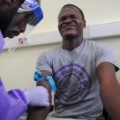

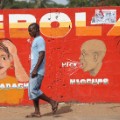

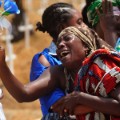

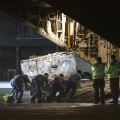






































She and other health care workers would later be credited with playing a significant part in corralling and ultimately ending the devastating outbreak.
But, as Cafferkey learned, it came at a cost.
She fell ill shortly after touching back down on UK soil. Her Ebola diagnosis came next, followed by intensive treatment at the Royal Free Hospital. That facility has an isolation unit tended by specially trained medical staff and a tent with controlled ventilation set up over the patient's bed.
Her road to recovery wasn't always smooth. The Royal Free Hospital at one point noted that her condition had "gradually deteriorated over ... two days" and that she was then critical.
Cafferkey, though, managed to rebound and weeks later was allowed to go home.
U.S. doctor had traces of Ebola in eye months later
According to the WHO, Cafferkey was then and is still the lone Ebola case in the United Kingdom.
Her relapse does not represent "a new case of Ebola (but rather) is a complication of her previous illness," Scotland's chief medical officer said Friday. It's a rare thing, but not necessarily unprecedented.
American doctor Ian Crozier was treated for Ebola in Atlanta last year and declared free of the virus in his blood.
But less than two months after being discharged, Crozier started experiencing problems with his vision, and doctors were stunned to find traces of the virus in fluid from his eye.
Despite the presence of the virus, samples from tears and the outer eye membrane tested negative, which meant the patient was not at risk of spreading the disease during casual contact, the hospital said at the time.
Crozier received steroids and an antiviral agent, and his eye gradually returned to normal. His case prompted a warning to doctors to watch Ebola survivors for eye problems.

EmoticonEmoticon